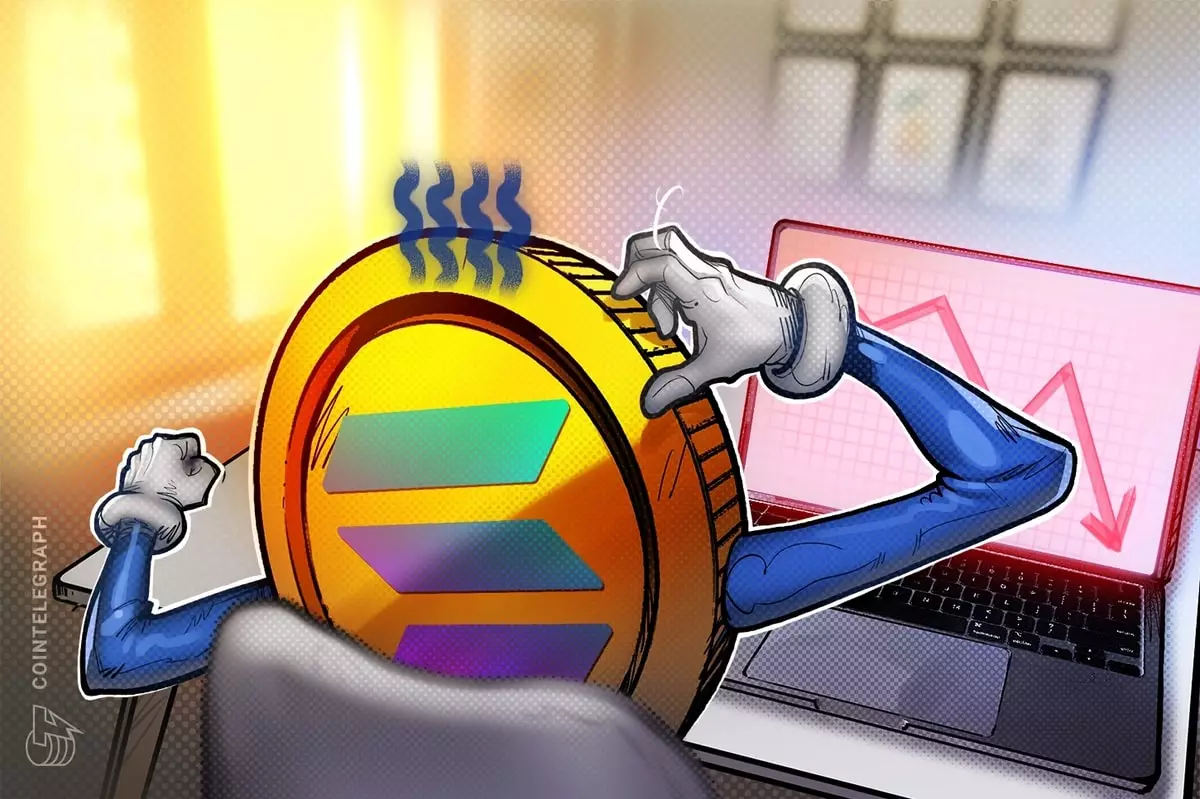Solana (SOL) saw a significant surge in value from October 30th to November 2nd, with a notable increase of 36.6%. However, the token failed to breach the $44.50 mark, resulting in a 10% correction down to $40 on November 6th. This price movement has left many investors questioning whether the growth of the Solana ecosystem and its network activity truly support its current market capitalization of $16.9 billion.
Peak at Breakpoint 2023 and Testnet Launch of Firedancer
On November 2nd, Solana reached its highest point since August 2022, coinciding with the Solana Breakpoint 2023 global conference held in Amsterdam. The conference generated significant hype around the token, even leading BitMEX co-founder Arthur Hayes to invest in SOL despite referring to it as “just a meme.”
During the Breakpoint conference, the Solana Foundation unveiled the testnet launch of Firedancer. This new client aims to enhance speed, reliability, and reduce hardware requirements for validators, addressing a long-standing criticism of Solana’s layer-1 blockchain. Firedancer offers parallel computing for smart contracts, which is a distinctive feature of Solana.
The Solana Foundation also made strides in improving data accessibility and analytics. On October 31st, they announced the availability of their network dataset on Google Cloud BigQuery. This serverless data warehouse solution supports machine learning and artificial intelligence, allowing developers and companies to access archival data and gain analytical insights in a transparent and secure manner.
The Solana Foundation has maintained a consistent level of development activity. In September, validators approved the v.1.16 update, which introduced confidential transactions for SPL tokens using zero-knowledge (ZK) proofs on the Solana network. This update addresses privacy concerns and demonstrates the commitment of the development team to continuously improve the ecosystem.
Despite the positive price performance, not all news surrounding Solana has been favorable. On October 17th, Lido Finance, a decentralized liquid staking protocol, announced its decision to cease operations on the Solana network. The reasons cited included unsustainable financials and low fees, leading to a community vote to terminate the service.
The central question that arises is whether the on-chain activity and metrics related to decentralized applications (DApps) truly support the surge in SOL’s price. Analyzing Solana’s on-chain data and ecosystem growth in comparison to its competitors provides insight into this issue.
Solana’s primary DApp metric, total value locked (TVL), indicates weakness as it reached its lowest levels in over two years on November 5th. Solana’s DApp deposits experienced a significant decrease of 30% in just 30 days, with 9.83 million SOL deposited. In comparison, Ethereum’s TVL in ETH declined by only 2% during the same period, while BNB Chain saw an 8% decrease in BNB terms.
Despite Solana’s low fees and continued development efforts following the FTX-Alameda Research collapse, the number of active users on the network remains relatively small. Solana’s largest decentralized exchange (DEX), Raydium, recorded only 17,380 active addresses in the past 30 days. Similarly, the most widely used game on Solana, Star Atlas, had 12,420 unique addresses during the same period. In contrast, BNB Chain’s DEX, PancakeSwap, boasted 513,060 active addresses, and its leading game, Stargate, had 106,400 users. Avalanche’s DEX, Trader Joe, had 54,130 active addresses, and its prominent game, Galxe, had 32,040 unique addresses.
Furthermore, Solana’s DApps volume in the last 30 days reached $609 million according to DappRadar. However, this number pales in comparison to BNB Chain’s $11 billion, Polygon’s $5.3 billion, and Avalanche’s $727 million in DApps volume. These figures raise concerns about Solana’s ability to attract users and generate high transaction volumes within its ecosystem.
Criticism has also emerged regarding the requirements for validators to undergo Know Your Customer (KYC) and Anti-Money Laundering (AML) procedures. StakeWithPride, a user on a social network, highlighted the need for KYC and AML requirements to become a network validator.
Moreover, a social network user named arixoneth revealed that out of 1,997 validators, 1,818 received delegations from the Solana Foundation or Alameda, which accounts for almost 90% of all validators. These participants effectively delegated 106 million SOL from these two entities, raising concerns about centralization and dissatisfaction among SOL token holders regarding validator selection and development subsidies.
Despite the recent price surge, Solana’s on-chain activity contradicts the upward movement and raises legitimate concerns about the sustainability of its market capitalization. The decrease in TVL, low number of active users, and relatively small DApps volume compared to competitors all point to potential weaknesses within the Solana ecosystem. Additionally, scrutiny regarding KYC and AML requirements for validators and concerns about centralization contribute to the overall skepticism surrounding Solana’s future price performance and ecosystem growth.

